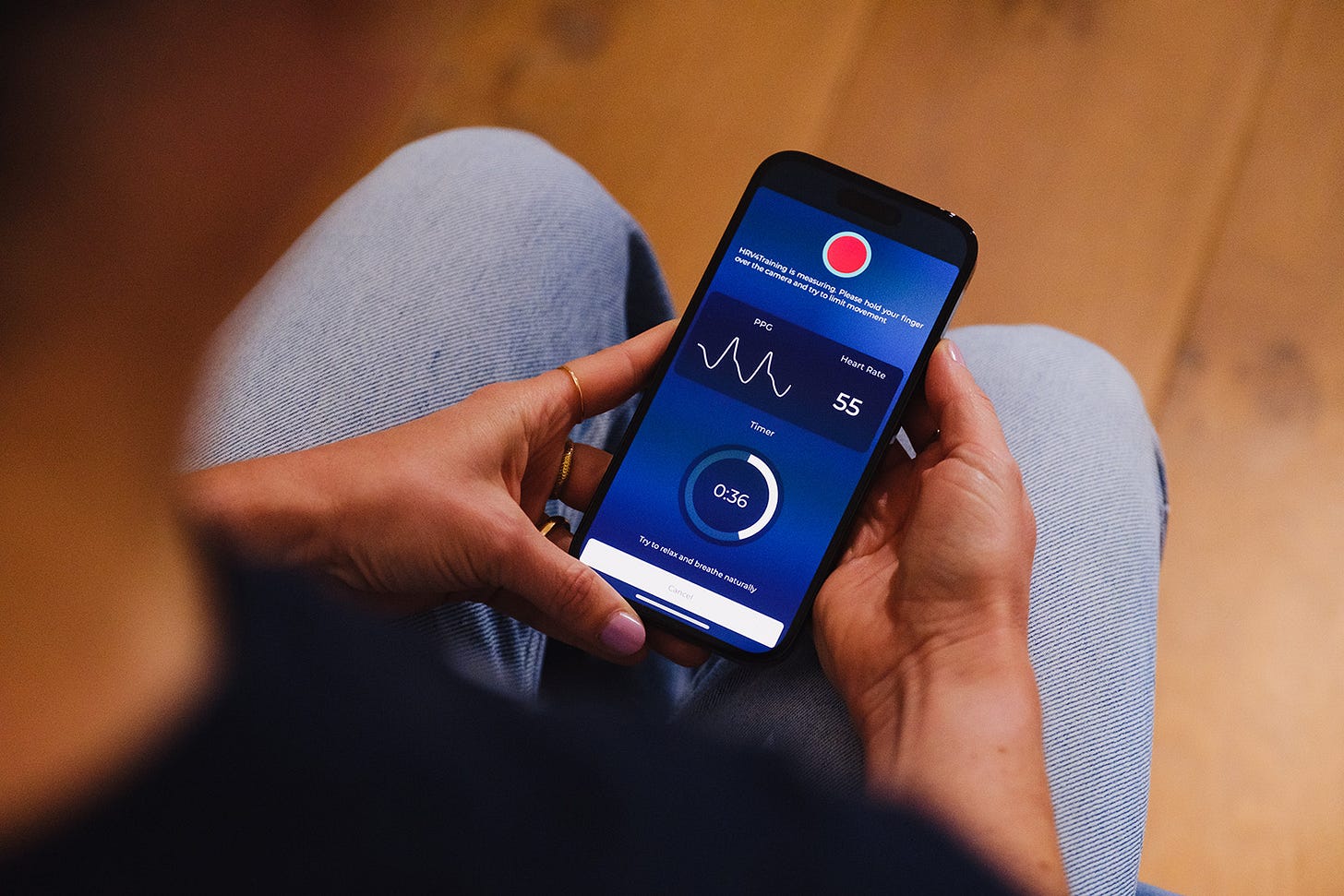[Q&A] Could I get more accurate HRV data using a chest strap?
Yes.
I have received this question a few times recently, hence this short blog.
A chest strap is the only way to measure your HRV, as it is the only device that tracks the electrical activity of the heart. Any other device that uses optical methods will be measuring your Pulse Rate Variability, or PRV. Hence, yes, if you want to measure your HRV, not only a chest strap is more accurate, but it is the only way to go.
This being said, optical methods, for most individuals (not all) can provide data that is equally good when designed and used correctly (big caveat). For example, for my morning measurements, I use the iPhone camera in HRV4Training, as I developed and validated the technology and therefore consider it as good as a chest strap for me. Plus, this is the only optical method that lets me actually see the raw data (the PPG waveform) hence it is very easy to determine if there is a signal quality issue (HRV4Training also reports signal quality at the end of a measurement, something no wearable does, probably because of the overall poor quality of their data).
I discuss in more detail the similarities and differences between HRV and PRV, here.
To conclude:
use a chest strap (e.g. a Polar H10) if you want to measure your actual HRV (and not your PRV). Using a chest strap also allows you to track data consistently even if you change software (this is not the case if you use optical methods or wearables, where the data changes based on software updates, new hardware versions, etc. - as discussed here). Another advantage is that you can measure for longer (e.g. 3-5 minutes), which is more in line with clinical standards, even though typically not necessary for morning spot checks. My recommendation is a Polar H10 (no affiliation, it’s just the most accurate that I could validate in my research). If you plan to experiment with biofeedback and slow breathing exercises (e.g. with the HRV4Biofeedback app), then I’d highly recommend getting a chest strap (that’s also what I use in this case).
if a chest strap is not practical for you, make sure to use a validated tool that shows you the raw PPG data and reports signal quality (such as HRV4Training). Even if you use an optical measurement, measure intentionally, as data collected with passive measurements is up to 80% garbage (see data here for one of the major manufacturers).
For most people, eventually, the day-to-day data and relative changes will track very similarly between technologies, but if you decide to switch, give it a few days or weeks if you see a discrepancy, as the absolute values might differ between sensing modalities (and even between measurement locations when using PPG, e.g. finger or wrist).
Marco holds a PhD cum laude in applied machine learning, a M.Sc. cum laude in computer science engineering, and a M.Sc. cum laude in human movement sciences and high-performance coaching.
He has published more than 50 papers and patents at the intersection between physiology, health, technology, and human performance.
He is co-founder of HRV4Training, advisor at Oura, guest lecturer at VU Amsterdam, and editor for IEEE Pervasive Computing Magazine. He loves running.
Social:




Hi Marco, many sensors like the Polar and Whoop use standard HRM Bluetooth protocols to communicate with third-party apps. I am curious if you know of ring sensors with the same capability. I tested the Oura ring, and it appears they use a proprietary HRM BTLE protocol. I want to experiment with an open HRV ring if you are aware of any of them. Thanks for all your excellent research and advice.